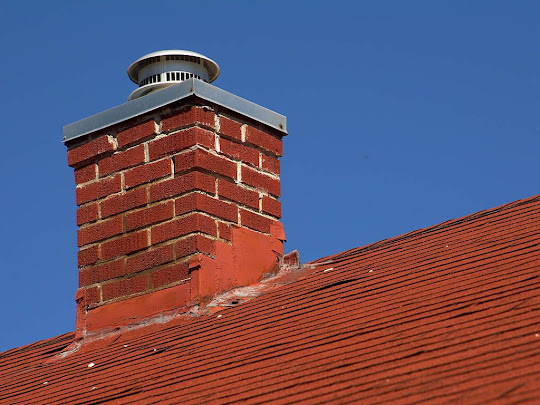Guide for Exterior Chimney Care
What parts of the chimney’s exterior should be taken care of?
Exterior chimney care involves taking care of the below-given parts:
- Bricks
Performance and safety are directly affected by the overall condition of the chimney bricks. Bricks can eventually become loose, cracked, or spall (flaking) as an outcome of ageing and exposure to the weather. To identify these problems early on, routine inspections are important. If bricks become damaged, they should be modified or repaired immediately to keep the chimney solid and stop water from seeping in. Ignoring brick repair could result in additional damage and endanger your home’s and chimney’s safety. With the right maintenance, your chimney will stay powerful and beneficial for many years to come.
- Chimney Cap
To shield your chimney from the weather, a chimney cap is required. It is set up at the top of the chimney to effectively vent smoke and gases while keeping out debris, snowfall, animals, and birds. Each year, the chimney cap has to be checked to make sure there are no damage issues (rust, cracks, etc.) that might decrease its functionality. Keeping a clean cap ensures adequate airflow and lowers the likelihood of obstruction-caused chimney fires. Over time, keeping an operational chimney cover lowers costs for upkeep and increases the lifespan of your chimney.
- Chimney Chase Cover or Chimney Crown
The protection of the chimney structure is greatly enhanced by chimneys with chase covers (for prefabricated chimneys) or chimney crowns (for masonry chimneys). These components cover the chimney opening from factors that could otherwise soak in and harm it, such as snow, rain, and debris. Maintaining an eye out for signs of wear, rust, or cracks, and routine inspections are important. It is essential to replace or repair damaged chase covers or crowns when necessary to avoid water damage to the structural elements and interior of the chimney. Maintaining these crowns or covers properly ensures that your chimney continues working efficiently and will last longer.
- Chimney Flashing
To establish a waterproof barrier, flashing is installed where the chimney joins the roof. Flashing, which is made of copper, aluminium, or steel, prevents water from seeping into the attic and roof. It’s essential to inspect the flashing annually to look for cracks, rust, or lifting, as these issues can result in water damage and roof leaks. It is essential to immediately replace or repair any broken flashing to maintain its efficacy in preventing water intrusion into your property. It’s critical to maintain appropriate flashing for the long-term stability of your roof and chimney.
- Surrounding Area Maintenance
For the general health and safety of your chimney, it’s also essential to maintain the area around it. To prevent branches from damaging the chimney’s building or preventing airflow, trim the trees and other vegetation close to the chimney. If overhanging branches come into contact with a warmed chimney or chimney cap, they may also be a fire danger. By keeping the area free of waste like leaves and sticks, you lower the likelihood of blockages that may pose problems for your chimney’s operation or even spark a fire. To ensure the best possible chimney performance and safety, clean up and inspect the area regularly.
- Waterproof your chimney
It’s crucial to waterproof the exterior of your chimney, particularly if you reside somewhere that gets a lot of rain or snow. By creating a barrier that opposes moisture, this protective technique prevents water from entering the mortar joints and bricks of the chimney. Waterproofing helps avoid problems like freeze-thaw damage, brick spalling, and mortar deterioration, all of which over time may compromise the structural integrity of the chimney by keeping water out. Applying a high-quality waterproofing mix regularly guarantees long-term protection against water-related damage, prolonging the life of your chimney and lowering the need for pricey repairs. To ensure optimal maintenance and performance, consulting with a chimney professional can offer an understanding of the finest products and techniques suited to your chimney’s particular needs.
.jpg)
.jpg)

.jpg)
Comments
Post a Comment